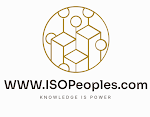Introduction: Navigating the World of BRCGS Certification
In today's global market, food safety, product quality, and supply chain transparency are paramount. For businesses in the food industry, achieving and maintaining high standards in these areas is not only a moral obligation but also a legal requirement. One of the internationally recognized certifications that can help businesses meet these demands is the BRCGS (Brand Reputation Compliance Global Standards) Certification. In this beginner's guide, we will explore what BRCGS Certification is, its benefits, the certification process, and how it can set your business apart in the competitive world of food production and supply.
Section 1: Understanding BRCGS Certification
BRCGS Certification: What Is It?
BRCGS Certification is a globally recognized standard that focuses on food safety and quality management. It was developed to help organizations ensure the safety, legality, and quality of their products. This certification covers a wide range of industries, including food, packaging, storage, and distribution.
BRCGS vs. Other Certifications
Before we dive deeper into BRCGS Certification, it's essential to understand how it differs from other certifications in the market. BRCGS Certification is often compared to ISO 22000 and HACCP (Hazard Analysis and Critical Control Points). While ISO 22000 provides a broader framework for food safety management systems, BRCGS Certification is more specific, targeting particular industries and emphasizing a risk-based approach.
Section 2: The Benefits of BRCGS Certification
Ensuring Food Safety
Food safety is a top priority in the food industry. BRCGS Certification helps businesses implement effective food safety management systems, reducing the risk of contamination and ensuring the safety of consumers.
Enhancing Product Quality
In addition to safety, product quality is crucial for consumer satisfaction. BRCGS Certification helps organizations maintain consistent product quality, leading to higher customer trust and loyalty.
Meeting Regulatory Requirements
Compliance with regulatory standards is non-negotiable in the food industry. BRCGS Certification assists businesses in aligning their processes with these regulations, reducing the risk of legal issues and penalties.
Expanding Market Access
BRCGS Certification is recognized globally. Achieving this certification can open doors to new markets and business opportunities, allowing organizations to expand their reach.
Section 3: The BRCGS Certification Process
Preparation and Gap Analysis
The journey towards BRCGS Certification begins with thorough preparation. This includes understanding the standard's requirements, conducting a gap analysis of your current processes, and identifying areas that need improvement.
Documentation and System Implementation
Once the gaps are identified, the next step is to develop and implement the necessary documentation and systems to meet BRCGS standards. This includes creating policies, procedures, and controls.
Training and Education
Proper training and education are crucial for your staff to understand the BRCGS requirements and their roles in maintaining compliance. This phase ensures that everyone in the organization is aligned with the certification goals.
Internal Auditing
Before seeking external certification, conducting internal audits is essential. These audits help identify any remaining issues and ensure that your systems are operating effectively.
Choosing a Certification Body
Selecting a reputable certification body is a critical decision. The certification body will assess your organization's compliance with BRCGS standards and grant the certification if requirements are met.
External Auditing and Certification
During the external audit, a certified auditor from the chosen certification body will assess your organization's processes and systems. If your organization meets the BRCGS standards, you will receive the coveted BRCGS Certification.
Section 4: Maintaining BRCGS Certification
Continuous Improvement
Achieving BRCGS Certification is just the beginning. To maintain it, organizations must commit to continuous improvement. This involves regularly reviewing and updating processes to ensure they align with evolving industry standards and best practices.
Regular Audits
Certified organizations are subject to regular audits by the certification body to ensure ongoing compliance. These audits help identify any areas that may have deviated from the standards.
Addressing Non-Conformities
In the event of non-conformities or deficiencies identified during audits, organizations must take corrective and preventive actions promptly. This demonstrates a commitment to rectifying issues and preventing their recurrence.
Section 5: How BRCGS Certification Sets You Apart
Consumer Confidence
Having the BRCGS Certification logo on your products and marketing materials instills confidence in consumers. It shows that you are dedicated to delivering safe and high-quality products.
Competitive Advantage
In a crowded marketplace, BRCGS Certification can differentiate your brand from competitors. It can be the deciding factor for consumers when choosing between products.
Supply Chain Integrity
BRCGS Certification is not limited to the organization itself but extends to its supply chain. This ensures that suppliers also adhere to stringent quality and safety standards, reducing the risk of contamination or subpar ingredients.
Section 6: Conclusion - Your Path to BRCGS Certification
In a world where consumers are more conscious than ever about what they eat and where their products come from, BRCGS Certification is a valuable asset for any organization in the food industry. It guarantees food safety, product quality, and regulatory compliance, setting you apart from competitors and gaining the trust of consumers.
As you embark on your journey towards BRCGS Certification, remember that it's not just a one-time achievement but a continuous commitment to excellence. Regular audits and a focus on improvement will help your organization maintain this prestigious certification and reap its many benefits.
With BRCGS Certification, you're not just ensuring your business's success; you're also contributing to a safer and more transparent food industry for every customer.
References:
[1] BRCGS Global Standards. (2021). About BRCGS. https://www.brcgs.com/about-brcgs/
[2] BRCGS Global Standards. (2021). BRCGS for Food Safety. https://www.brcgs.com/standards/food-safety/
[3] ISO. (2021). ISO 22000 - Food safety management systems. https://www.iso.org/iso-22000-food-safety-management.html
[4] Food Safety Magazine. (2018). The Differences Between HACCP and BRC Global Standards. https://www.foodsafetymagazine.com/magazine-archive1/octobernovember-2018/the-differences-between-haccp-and-brc-global-standards/
[5] Food Safety Magazine. (2015). 8 Tips for Preparing for Your BRC Audit. https://www.foodsafetymagazine.com/magazine-archive1/aprilmay-2015/8-tips-for-preparing-for-your-brc-audit/


